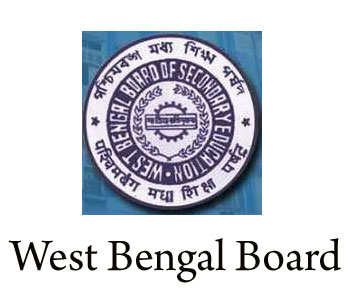West Bengal Board Higher Secondary Syllabus (Arts) Class-XI
Disclaimer: This website is NOT associated with CBSE, for official website of CBSE visit - www.cbse.gov.in

West Bengal Board Higher Secondary Syllabus (Arts) Class-XI
West Bengal Board Higher Secondary Syllabus (Arts) Class-XI
HISTORY (HIST)
Theory-80 marks
Project-20 marks
1. Understanding History
1.1 Pre-History, Proto-History, History.
Early sources and their nature.
Forms of recorded History.
Facts and their interpretation.
Itihasa-Purana tradition.
Indo-Persian traditions of History writing in Medieval India
1.2 Notion of time in History: Linear and Cyclical.
Periodisation in History and chronological sequencing.
Rationale behind: a) conventional tripartite divisions.
b) Recent trends in periodisation.
1.3 Time frame and focus covered in class XI: focus on main markers and transitions.
2. From Primitive Man to Early Civilizations.
2.1 Epochs in the stream of time: A brief outline of archaeological cultures- Pleistocene, Paleolithic,
Neolithic, Chalcolithic.
2.2 Early Africa and Primitive Man - Hunter-gatherers and their culture. Changing Climates;
Landscape features; migrations.
2.3 Early Pastoralists and Agriculturists; Riverine Civilizations:
a) Indian subcontinent: Mehergarh and Harappa (First Urbanisation)
b) Egypt and Sumer.
3. Evolution of Polities: Concept of Governance and Institutions.
3.1 City-States: Classical Greece.
3.2 Monarchies: From Janapadas to Mahajanapadas (Chiefdoms to Kingdoms).
3.3 Empires: Definition; Difference with Monarchy.
Empires compared:
a) The Mauryan Empire and Macedonian Empire.
b) The Roman Empire and The Gupta Empire.
c) The Mughal Empire and The Ottoman Empire.
4. Nature of the State and its apparatus.
4.1 Nature of the State: The ideal Proto-type.
a) Indian context: Kautilya, The Arthashastra and State Craft; Ziauddin Barani,
Fatawa-i-Jahandari and the nature of the State under the Delhi Sultans.
b) European context: Cicero and the Roman World, Thomas Cromwell and the New Monarchy; Intellectual underpinnings of the Early Modern State.
4.2 Apparatus of Governance:
a) Persia: Satraps.
b) China: Mandarins.
c) Delhi Sultanate: Iqtadars.
d) Mughal: Mansabadars.
5. Aspects of Economy.
5.1 Slave Economy and Slavery as an Institution:
a) Rome and Egypt
b) India
5.2 Feudal Economy:
a) Western Europe, The Classical Model
b) Indian experiences: Gupta Empire and The Delhi Sultanate;
5.3 Trade and urbanisation. Between Expansion and Contraction: European and Indian Experiences compared.
6. Dynamics of Society.
6.1 Social Stratification:
a) Slave Society: Greece-Helot, Periocei, and their relationship with Citizens.
b) Varna and Jati (special mention of Forest-dwellers viz Nisadas)
c) Fallen Ksatriyas- Yavanas, sakas, Hunas
d) Rajputs as a status group.
6.2 Women in society: Indian context.
a) Education of Women
b) Forms of Marriage and the Household
c) Inheritance and Property Rights (Streedhan)
d) Outstanding Women in Political authority: Egypt: Nefertiti, Cleopatra; India: Rani Durgavati, Razia, Noor-Jahan.
7. Religion.
7.1 Religion and the State:
a) India: Asoke and Dhamma,
Alauddin Khalji, The Sharit and the Ulema.
Akbar, Din-i-llahi and Sulh-i-Kul
b) Western Europe: The Holy Roman Empire and papacy.
Crusades.
c) Arab World: The Universal Caliphate.
7.2 Religion and Society:
a) Vedic religion.
b) Polytheism and the European context.
c) New religious movements (Buddhism and Jainism).
d) Reformation movements in Europe.
Click Here to Download Full Art's Syllabus Class-XI
Courtesy: West Bengal Board